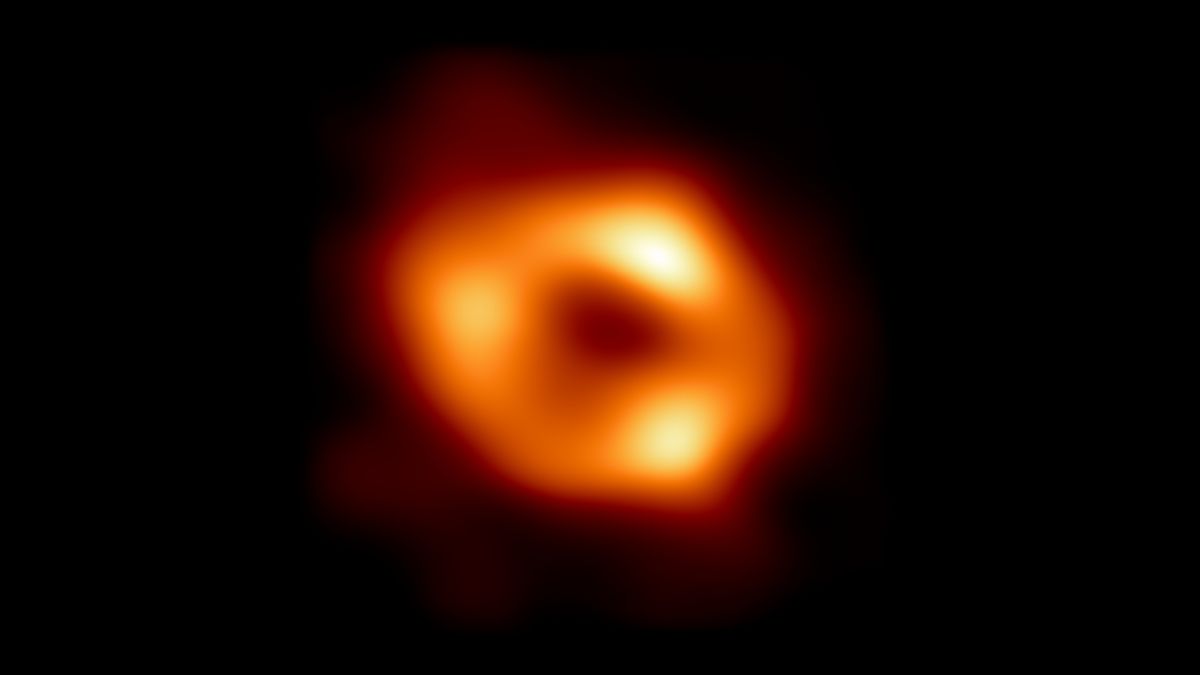4 min read NASA Collaborating on European-led Gravitational Wave Observatory in Space The LISA (Laser Interferometer Space Antenna) mission, led by ESA (European Space Agency) with NASA contributions, will detect gravitational waves in space using three spacecraft, separated by more than a million miles, flying in a triangular formation. Lasers fired between the satellites, shown in this artist’s concept, will measure how gravitational waves alter their relative distances. AEI/MM/Exozet The first space-based observatory designed to detect gravitational waves has passed a major review and will proceed to the construction of…
Read MoreTag: Black Holes
Curious Kids: Why are some black holes bigger than others?
This is an article from Curious Kids, a series aimed at children. The Conversation is asking kids to send in questions they’d like an expert to answer. All questions are welcome – serious, weird or wacky! This article was originally published at The Conversation. The publication contributed the article to Space.com’s Expert Voices: Op-Ed & Insights. Jaclyn Champagne, postdoctoral researcher, University of Arizona’s Steward Observatory. Black holes are dense astronomical objects with gravity so strong that nothing, not even light, can escape. Anything that crosses the boundary of a black hole’s gravitational influence, called the…
Read MoreHubble Finds Weird Home of Farthest Fast Radio Burst
5 min read Hubble Finds Weird Home of Farthest Fast Radio Burst A NASA Hubble Space Telescope image of the host galaxy of an exceptionally powerful fast radio burst, FRB 20220610A. Hubble’s sensitivity and sharpness reveals a compact group of multiple galaxies that may be in the process of merging. They existed when the universe was only 5 billion years old. FRB 20220610A was first detected on June 10, 2022, by the Australian Square Kilometer Array Pathfinder (ASKAP) radio telescope in Western Australia. The European Southern Observatory’s Very Large Telescope…
Read MoreGravitational waves rippling from black hole merger could help test general relativity
Scientists have discovered gravitational waves stemming from a black hole merger event that suggest the resultant black hole settled into a stable, spherical shape. These waves also reveal the combo black hole may be much larger than previously thought. When initially detected on May 21, 2019, the gravitational wave event known as GW190521 was believed to have come from a merger between two black holes, one with a mass equivalent to just over 85 suns and the other with a mass equivalent to about 66 suns. Scientists believed the merger…
Read More1st black hole ever imaged by humans has twisted magnetic fields and scientists are thrilled
Spiraling light at the edge of a distant supermassive black hole could help matter escape from being consumed by this cosmic titan. The supermassive black hole of M87 — also known as M87* — has a mass equal to around 6.5 billion suns. It especially came to the public’s attention in 2019 when an image of M87*, captured by the Event Horizon Telescope (EHT), was the first glimpse of the surrounding environment of a black hole ever obtained by humanity. Now, the EHT Collaboration, who was behind that historic image, have modeled…
Read MoreSwirling gas helps scientists nail down Milky Way’s supermassive black hole mass
At the center of our galaxy sits a dark enigma, a supermassive black hole named Sagittarius A*. Astronomers have known about the existence of Sgr. A* for some time, and even snagged a spectacular image of it in 2022, but getting exact measurements of its size and activity have proven elusive. But now, in new findings from the Max Planck Institute for Extraterrestrial Physics (MPE), a group of astronomers have determined, with high accuracy, the mass and radius of Sgr A*. Specifically, Sgr A* was found to come in at…
Read MoreGiant Black Holes Make Tiny, Ghost-like Particles
Blazars, the gas-guzzling black holes at the center of galaxies, could make most of the tiny particles known as neutrinos we catch on Earth. The post Giant Black Holes Make Tiny, Ghost-like Particles appeared first on Sky & Telescope.
Read MoreA Black Hole Lurks in a Galaxy Near Our Own
Astronomers have found a dormant black hole orbiting a massive blue star in the Large Magellanic Cloud, a satellite galaxy of the Milky Way. The post A Black Hole Lurks in a Galaxy Near Our Own appeared first on Sky & Telescope.
Read MoreWhere Did the First Quasars Come From?
New research shows how black holes with tens of thousands of Suns’ worth of mass can form in the universe’s early years. The post Where Did the First Quasars Come From? appeared first on Sky & Telescope.
Read MoreMonstrous Black Holes Spin More Slowly — But Why?
X-ray observations add to growing evidence that the most massive black holes have a different past than their lightweight peers. The post Monstrous Black Holes Spin More Slowly — But Why? appeared first on Sky & Telescope.
Read More

